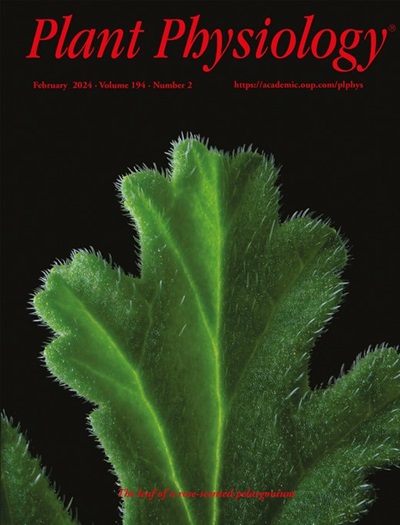Cistanthe longiscapa exhibits ecophysiological and molecular adaptations to the arid environments of the Atacama Desert
IF 6.5
1区 生物学
Q1 PLANT SCIENCES
引用次数: 0
Abstract
Understanding how plants survive extreme conditions is essential to breeding resilient crops. Cistanthe longiscapa, which flourishes in the Atacama Desert, provides a rare glimpse into plant resilience. To uncover the genetic basis of its stress tolerance, we investigated the ecophysiological and transcriptomic responses of C. longiscapa from 3 sites with low but different precipitation levels. Ecophysiological analyses were performed on samples collected in the field at dusk and dawn, which are crucial stages in crassulacean acid metabolism (CAM), a water-efficient type of photosynthesis. Additional transcriptomic analysis allowed us to evaluate CAM intensity in C. longiscapa and identify changes in the molecular signature of these plants. Our results show that C. longiscapa displays considerable ecophysiological trait response variation across the 3 sites, including variations in markers such as nocturnal acid accumulation, isotopic carbon ratio, and succulence, among others. Analysis of gene expression patterns revealed differences among plants exhibiting varying intensities of CAM photosynthesis and identified key molecular signatures associated with their ecological strategies. Additionally, genes related to stress responses, plastid activities, and circadian rhythm show contrasting expression levels between strong and weak CAM plants, and this expression profile is shared with other CAM plants under stress. Our findings demonstrate that C. longiscapa is a valuable resource for identifying genes involved in the transition between different CAM intensities. This may lead to the discovery of genes that enhance plant tolerance to stressful environments.Cistanthe longiscapa表现出对阿塔卡马沙漠干旱环境的生态生理和分子适应性
了解植物如何在极端条件下生存,对于培育具有抗逆性的作物至关重要。在阿塔卡马沙漠中生长茂盛的 Cistanthe longiscapa 为了解植物的抗逆性提供了难得的机会。为了揭示其抗逆性的遗传基础,我们研究了三个降水量较低但不同的地点的 C. longiscapa 的生态生理和转录组反应。生态生理学分析是在黄昏和黎明采集的样本上进行的,黄昏和黎明是草酸代谢(CAM)的关键阶段,草酸代谢是一种节水型光合作用。通过附加的转录组分析,我们评估了 C. longiscapa 的 CAM 强度,并确定了这些植物分子特征的变化。我们的结果表明,C. longiscapa 在 3 个地点的生态生理性状反应差异很大,包括夜间酸积累、同位素碳比率和多汁性等标记的变化。基因表达模式分析揭示了不同 CAM 光合作用强度植物之间的差异,并确定了与其生态策略相关的关键分子特征。此外,与胁迫响应、质体活动和昼夜节律相关的基因在强CAM植物和弱CAM植物之间表现出截然不同的表达水平,这种表达谱与其他胁迫下的CAM植物共享。我们的研究结果表明,C. longiscapa 是鉴定参与不同 CAM 强度之间转换的基因的宝贵资源。这可能有助于发现提高植物对胁迫环境耐受性的基因。
本文章由计算机程序翻译,如有差异,请以英文原文为准。
求助全文
约1分钟内获得全文
求助全文
来源期刊

Plant Physiology
生物-植物科学
CiteScore
12.20
自引率
5.40%
发文量
535
审稿时长
2.3 months
期刊介绍:
Plant Physiology® is a distinguished and highly respected journal with a rich history dating back to its establishment in 1926. It stands as a leading international publication in the field of plant biology, covering a comprehensive range of topics from the molecular and structural aspects of plant life to systems biology and ecophysiology. Recognized as the most highly cited journal in plant sciences, Plant Physiology® is a testament to its commitment to excellence and the dissemination of groundbreaking research.
As the official publication of the American Society of Plant Biologists, Plant Physiology® upholds rigorous peer-review standards, ensuring that the scientific community receives the highest quality research. The journal releases 12 issues annually, providing a steady stream of new findings and insights to its readership.
 求助内容:
求助内容: 应助结果提醒方式:
应助结果提醒方式:


